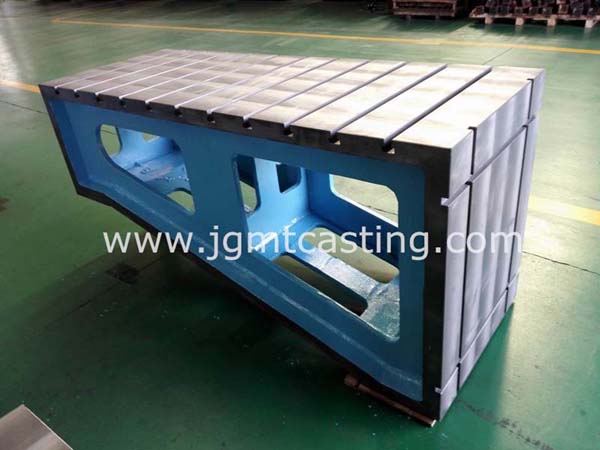The assembly platform is a workbench that is indispensable for marking, measuring, riveting, and tooling technology, and it can also be used as a channel for mechanical experiments and so on. From the perspective of the entire inspection process of the device platform, the flat plate itself is the measurement base surface, and its placement should be stable. In the production planning of the device platform, other layout types such as box type and rib plate type should be selected. On the opposite sides of the device platform, there should be device handles or hoisting orientation settings, threaded holes or cylindrical holes.
.jpg)
cast iron assembly plate
When checking with an autocollimator, the instrument and the flat plate are not on the same rigid body, so the sturdiness of the instrument bracket is particularly important. Therefore, the verification procedures of the installation platform require that the verification site should be strong and stable, and the verification address should be prevented from shaking. Since factories often place small plates on benches or tables, they are not strong and stable. As the inspectors move around the installation platform and the movement of the inspection objects on the installation channels, different gravity will occur, causing the spatial orientation of the installation plate to occur. Then the measurement results are not accurate. Therefore, when verifying this type of flat panel, the flat panel should be moved to a strong and stable place to prevent the influence of the change of gravity on the measurement results.
1. When measuring machine tools and machine tool parts using machine tool inspection rods, threaded plug ring gauges, etc., the measurement should be carried out after the machine tool or machine tool parts are stopped, otherwise it will not only cause premature wear of the measuring surface of the measuring tool and loss of accuracy, but also serious will cause accidents. Especially when lathes use calipers , who don’t think that the calipers are simple and it doesn’t matter if they are worn out. Pay attention to the fact that there are often pores and shrinkage holes in the casting and caused serious accidents
2. Do not place precision measuring tools such as cast iron plates, cast iron platforms, cast iron angle plates, cast iron square boxes, etc.), steel measuring tools (machine tool inspection rods, threaded plug gauges, threaded ring gauges, etc.) near the magnetic field, for example on the magnetic worktable of the grinder, so as not to make the measuring tool magnetic.

cast iron angle plate
3. During the use of measuring tools, do not stack them with tools, cutting tools such as files, hammers, turning tools and drills, etc., to prevent cutting tools, drills, etc. from damaging the surface of the measuring tool, and don’t just put them on the machine tool to prevent vibration caused by the machine tool. Especially vernier calipers, etc., should be placed flat in a special box to avoid deformation of the ruler body.
4. Precision measuring tools should be regularly verified and maintained. Precision measuring tools that are used for a long time should be sent to the measuring station for maintenance and verification accuracy on a regular basis to avoid product quality accidents due to excessive indication errors of the measuring tools.
5. Before using various precision measuring tools for measurement, the measuring surface of the measuring tool and parts should be wiped clean, so as not to affect the measurement accuracy due to the presence of dirt. It is wrong to use precision measuring tools such as vernier calipers, dial gauges and dial indicators to measure the surface of forging castings, or parts with abrasives (such as emery, etc.), which will easily cause the measurement surface to wear quickly and lose accuracy. Because there are burrs on the surface of the forging and casting blanks, and there are abrasives on the surface of the parts with abrasives. When measuring with precision measuring tools, they need to be in close contact with the surface of the parts, so that the measuring tools can easily rub against the burrs or abrasives. Circumstances such as planning, thereby causing the accuracy of the measuring tool to be impaired.
6. When it is found that there are abnormal phenomena in the precision measurement of the cast iron measuring tool, such as uneven surface of the measuring tool, burrs, rust spots, inaccurate scale, bending and deformation of the ruler body, inflexible movement, etc., the user should not disassemble and repair it by himself. Rough methods such as hammering, filing, and polishing with emery cloth are allowed to repair by oneself, so as not to increase the error of the measuring tool. If the above situation is found, the user should take the initiative to send it to the measuring station for maintenance, and continue to use it after checking the accuracy of the metering station.









